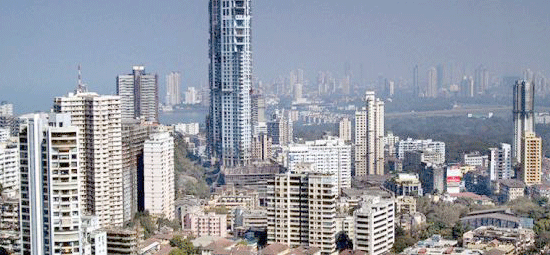With skyscrapers, Mumbai seeks to match China and U.S.
Now Mumbai is seeking to amend its more than 24 year old building rules which will allow slums to mushroom and it will keep housing beyond the reach of most of more than 19 million residents. As we all know the fact that world’s second-most densely populated mega city is the part of the prime minister’s “Housing for All” programme in which more than 20 million new homes will be available in all over India by the end of 2022 to help eliminate urban slums and squalor.
According to theory of experts, in real estate market the supply of apartments should increase with cut or discount in property prices to help India’s financial capital emulate wealthy peers including New York and Shanghai. This island-city has little available land for development and it is promising challenge to its floor space index (FSI) regulations that may permit developers to tear down old structures and build skyscrapers. It could be good news for some real estate developers such as; Sunteck Realty, Godrej Properties, Peninsula Land and Oberoi Realty as per the reports of Edelweiss Financial Services.
As per the statement of Vyomesh M. Shah, Managing Director of Hubtown, which is Mumbai based developer house, it is the only way to solve the perennial housing shortage in this city, where most of the people are living in pigeonhole-size apartments. Recently, the Municipal Corporation of Greater Mumbai has proposed to increase the FSI, to range between 2 and 8, compared with an earlier cap of 1.33. FSI determines the maximum floor area allowed in a building relative to the land on which it is erected. In 1964, when first time it was introduced than it was set on the cap of 4.5, which means on a one acre (0.4 hectare) plot of land, which is little smaller than a football field, living space totaling only 196,000 square feet could be built. However in 1991, policy makers make it low as 1.33 times, which was a move contrary to what most cities with limited land have tended to do for raising the permitted FSI to accommodate demand of real estate, as in Singapore, HongKong, Manhattan and some Chinese cities.
The proposed change will allow for variable building heights depending on consumption patterns, location and logistics. In past FSI was acting as the tool to limit the congestion in Mumbai, but under the new plan it is designed primarily to be a tool to manage physical development of Mumbai by laying out uniform rules, so that each and every location in Mumbai can provide good connectivity with other parts, said Aashiesh Agarwaal, an analyst at Edelweiss Securities. The more he added that now we are seek to address key lacunae impacting Mumbai’s real estate sector.
Real estate developers are stepping in right direction and its positive sign with strong governance, brand and execution capabilities. Most of the proposals are available for public comments after which final regulations will be released, which could be as late as end-2015. The S&P BSE India Realty Index has noticed the growth of 15 per cent in 2015 whereas; compared with the benchmark S&P BSE Sensex its 7.6 per cent gain. However; the Oberoi Reality which is country’s second-largest real estate developer by value climbed 13 per cent in the period while Godrej Properties added 16 per cent.




